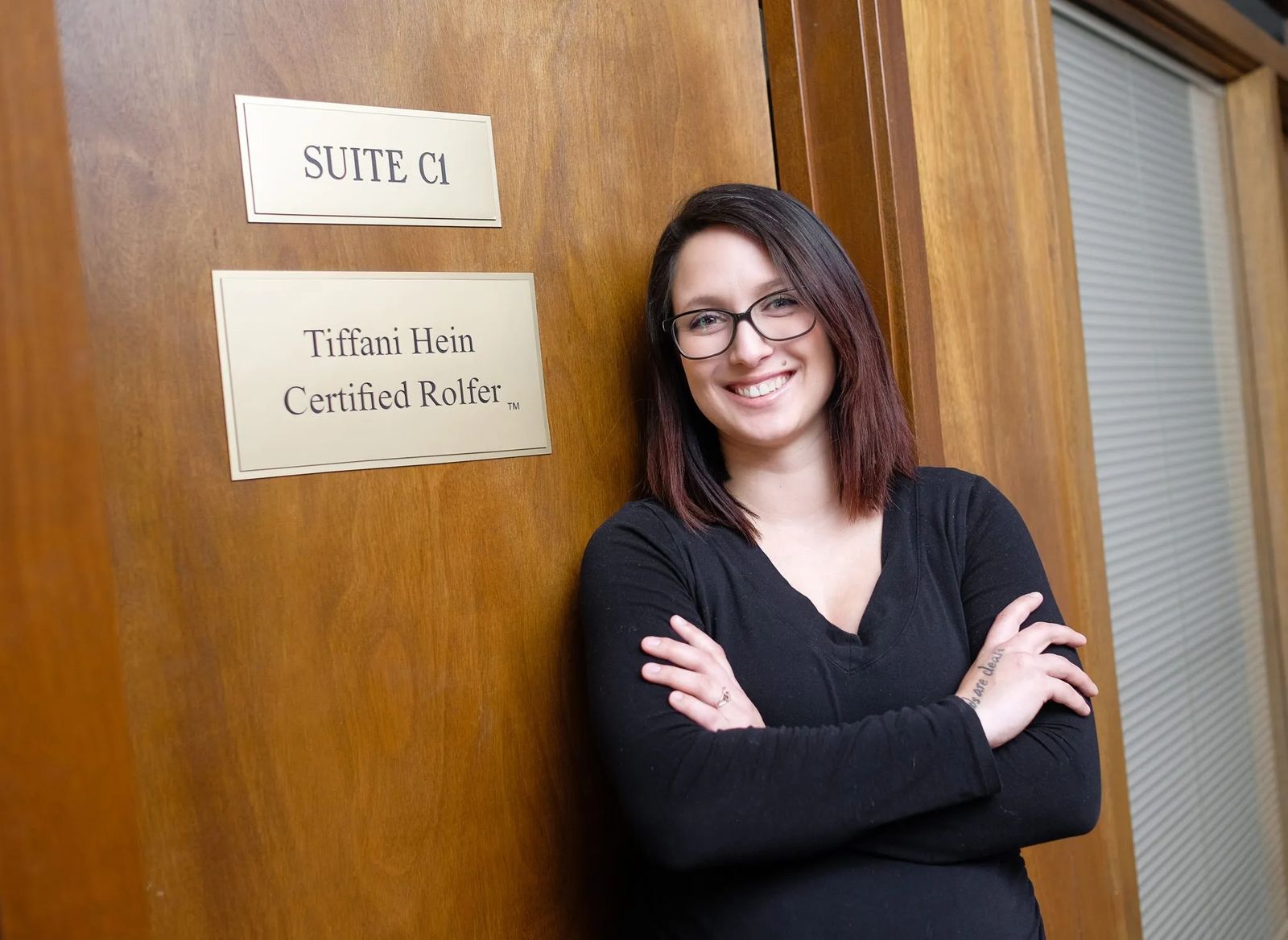
Establishing Body Balance, Ending Pain
Tiffani Hein brings Rolfing therapy to Billings
Four years ago, Jesse Hein’s doctor suggested that he consider the possibility of using a wheelchair. His arthritis was so severe he was already using a cane. At age 29, his prognosis was bleak. Jesse’s injuries date back to 2003 when he was a rescue swimmer in the U.S. Navy. During one mission, Jesse fell 80 feet from a helicopter and hit the water. The blow dislocated every joint on the left side of his body and injured his back in several places. When he left the military in 2005, he lived life in extreme, constant pain. Every day he took 13 medications. Seven were prescriptions for pain.
“My pain prevented me from doing just about anything I wanted to do,” he says.
Additionally, emotional and psychological fatigue from the constant pain and wartime experiences during deployment were keeping him from living a full life with his family and friends.
Everything changed when Jesse gave Rolfing a try.

Rolfing is a form of healing bodywork that targets the fascia, the connective tissue that supports and surrounds muscles and internal organs. It’s named after its creator, Dr. Ida P. Rolf, a German biochemist who studied the structure of the human body and developed hands-on techniques to reorder and realign the body to function at its best. She called it Structural Integration and centered her work on a series of 10 sessions – called a Ten Series – to address the function of the entire body.
Jesse’s aunt is a certified Rolfer who lives in Alaska. She encouraged him to try Rolfing and flew to Billings once a month for almost a year to administer a Ten Series on Jesse.
“After that first appointment I felt like I was 20 years younger,” Jesse says.
The Ten Series is a Rolfing protocol that systematically targets various layers of fascia throughout the body – from the top of the head to the bottoms of the feet and from the fascia under the skin to the deeper fascia surrounding internal organs. By the end of the Ten Series, Jesse was walking without his cane, and, with his doctor’s approval, he’s no longer taking any medications. Best of all, he now enjoys a full, active life and can play with his children.
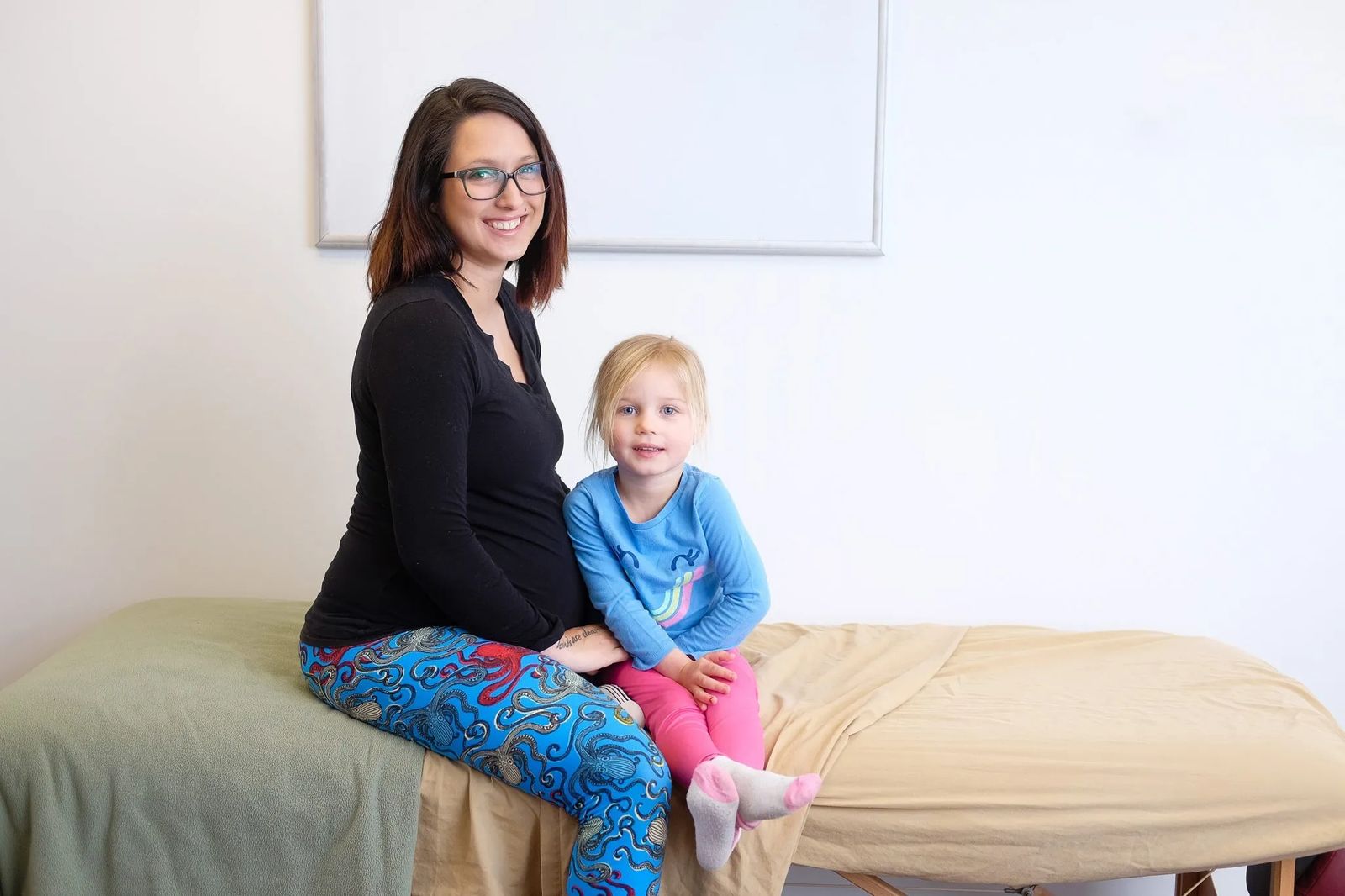
Jesse’s wife, Tiffani, was so moved by her husband’s progress that she became a certified Rolfer and is now practicing in Billings, helping others achieve some of the same results.
“It was amazing, and after seeing his recovery, I just knew I had to do it,” she says.
Rolfing is often confused with deep tissue massage, Tiffani says. However, massage only addresses tired or tense muscles. Rolfing is a corrective procedure, which puts it into the same category as chiropractic and physical therapy. Tiffani says that after a series of Rolfing sessions the body should become aligned and released to function normally, allowing the primary cause of the discomfort to be alleviated for the long-term.
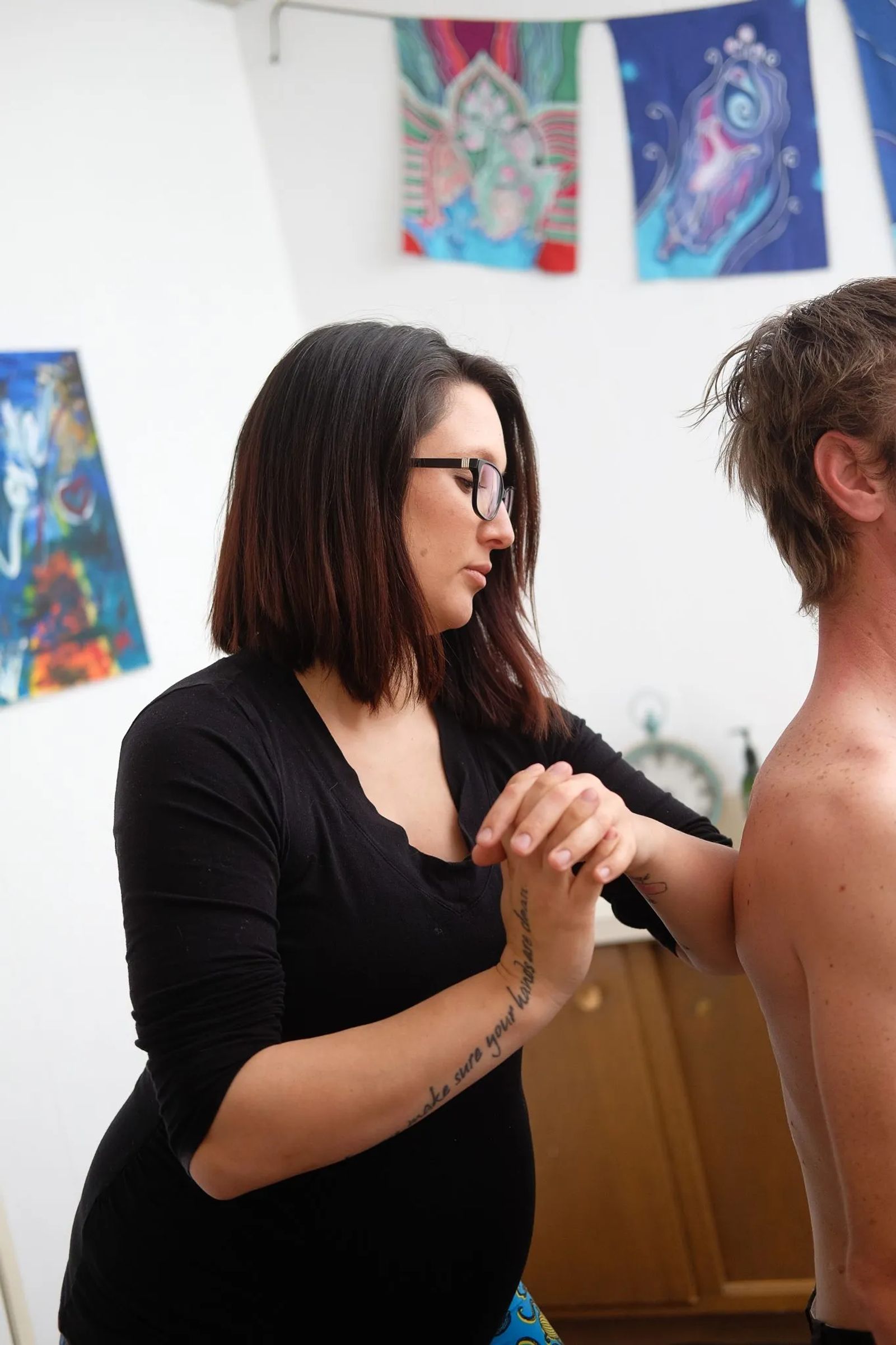
“Compared to other modalities, we want to get your body functioning at a level where you don’t have to come back,” Tiffani says.
Rolfing has been shown to be an effective treatment for many issues, including repetitive stress injuries, especially carpal tunnel syndrome, TMJ, and lower back pain. It can help speed healing after an injury, break up scar tissue and alleviate many of the symptoms of arthritis. Rolfing can also improve mood after the body begins to function at optimum levels without discomfort and pain. Many clients experience an emotional release during and after a Rolfing session, Tiffani says.
Jesse says his Rolfing sessions allowed him to process deep psychological wounds from his time in the service.
“It really changed my life. I was able to let go of all that pain and anger,” he says.
Tiffani received her training from the Rolf Institute of Structural Integration in Boulder, Colo. She and Jesse have five children with one on the way, but at the time she went for her training, their youngest was 18 months old. The coursework included three phases, lasting six to eight weeks apiece with three months of practice between each phase. It took her away from her family for long stretches of time, but Tiffani was determined to master Rolfing to help people like Jesse find relief.
The study of Rolfing and Structural Integration includes anatomy and physiology, kinesiology (the study of the human body with respect to movement), and what’s called Skillful Touch, learning how to feel the different layers of fascia, how to gently release them, and put people at ease during treatment. While Rolfing is usually more intense than massage, it is often small, deliberate movements that produce the greatest results.
“If you invite rather than force, it’s more likely to go that way,” Tiffani says.
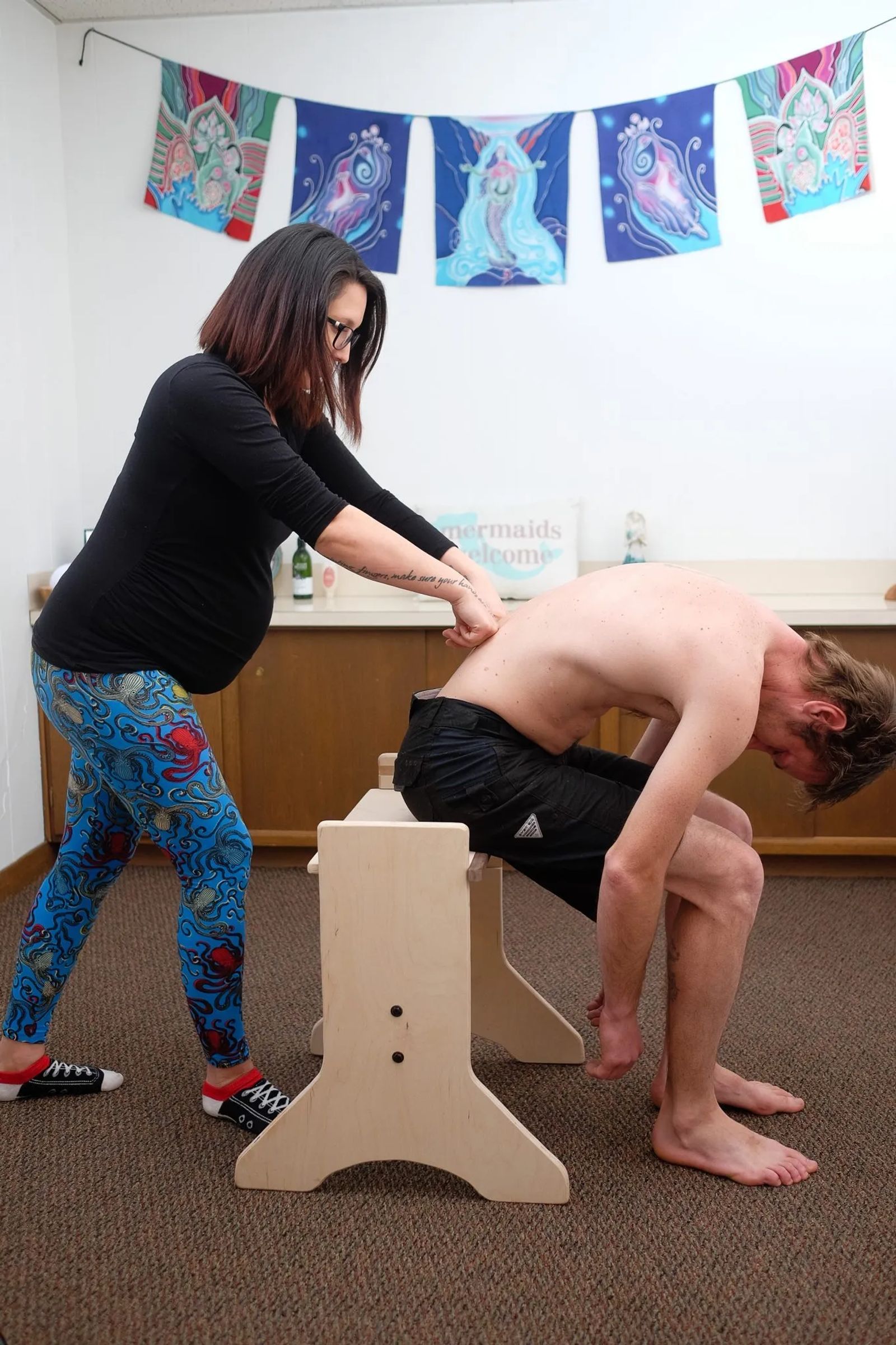
Jesse’s success story with Rolfing is not unique. Tiffani has several clients in her care who are experiencing relief from pain and ongoing physical issues.
Megan Ersek is a personal trainer and demonstrates exercises and moves heavy weights for her clients all day. Lower back pain was almost constant, and it kept her up at night. She turned to massage, but it only relieved the pain for a day or so. She tried Rolfing with Tiffani and has finally found lasting relief.
During her Ten Series, Megan also found relief from a ruptured eardrum, which had been causing quite a bit of pain. One of the Ten Series sessions focuses on the head, jaw, and neck with intranasal and intraoral release. Megan says her ear pain was completely gone after that session.
“What I found that’s different about Rolfing is that it not only gives you short-term relief, it provides relief for the long-term as well,” Megan says.
Chantal Hale is midway through her Ten Series and is already finding relief for a broken collarbone – an old injury that had been causing nagging pain for years. Chantal is a massage therapist and was familiar with Rolfing before her first session. It also has helped her with ongoing discomfort caused by a misaligned hip.
“It can be intense, but it is very effective,” Chantal says.
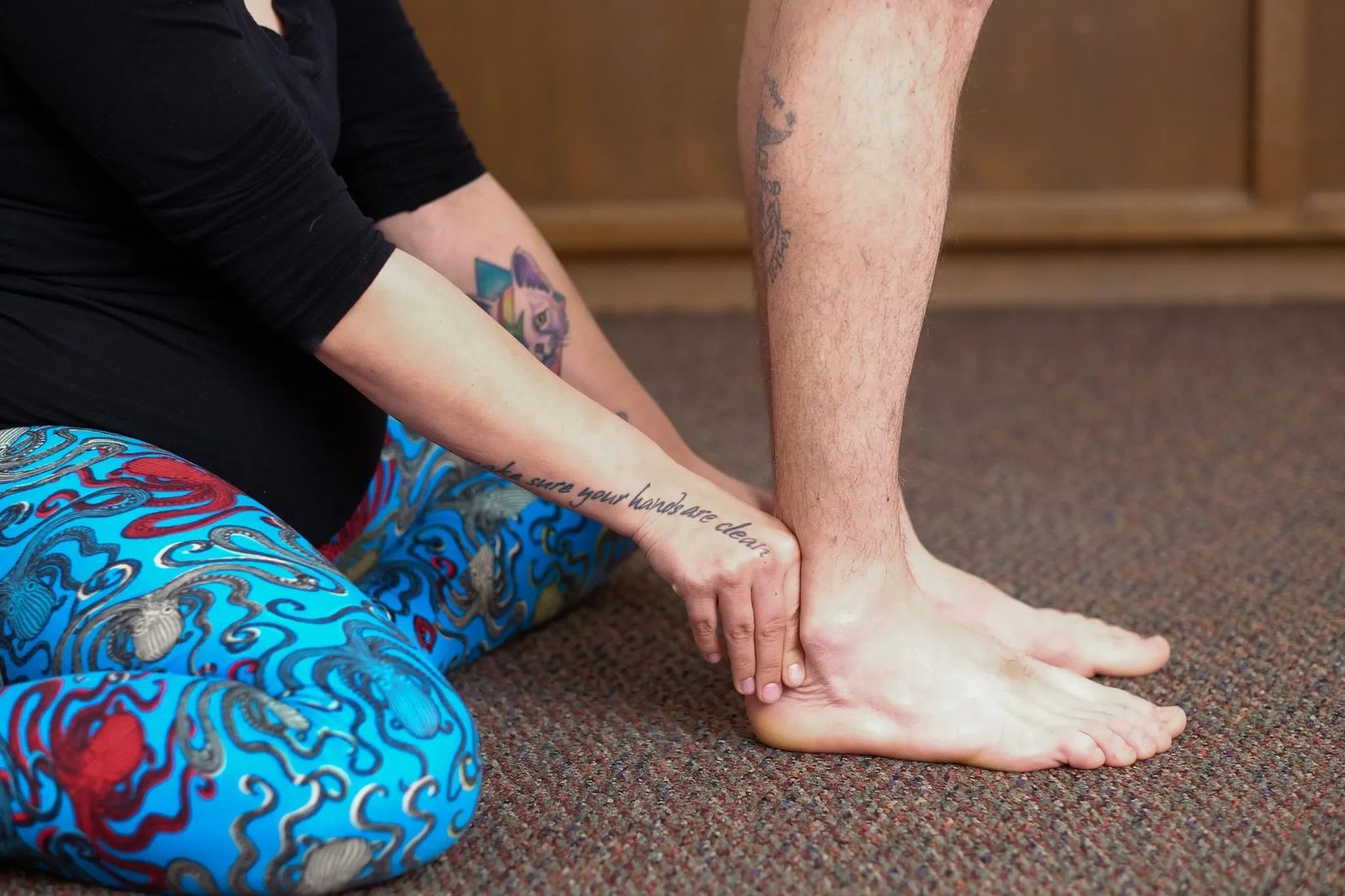
Each Ten Series begins with a thorough evaluation of the client’s posture and gait, Tiffani says. It’s used to determine what physical concerns need to be addressed and provide a baseline for improvement. In Rolfing sessions, Tiffani’s clients also learn the best ways to sit, walk, and breathe to maintain alignment after treatment. The Ten Series is the primary way to address ongoing issues, she says, but Tiffani also offers targeted “fix-it” sessions that seek to relieve specific issues.
“We find restrictions in the fascia, release them, then hydrate, and the body realigns on its own,” Tiffani says. “It’s a way of reestablishing balance in the body.”
Rolfing isn’t widely accepted by insurance companies, but Tiffani is working to be able to accept Medicare and Medicaid, and would eventually like to contract with the Veterans Health Administration to provide services to veterans through their network of hospitals and clinics.
“The biggest thing for my husband was that he found hope again – that he could get better and not be on pills the rest of his life,” Tiffani says. “Now I have a huge passion for helping veterans.”
To Learn More
Tiffani Hein, Certified Rolfer, is located at 1629 Avenue D, Ste. C1 in Billings. She can be reached at 406-696-1373 or by email at tiffanihein5@gmail.com














